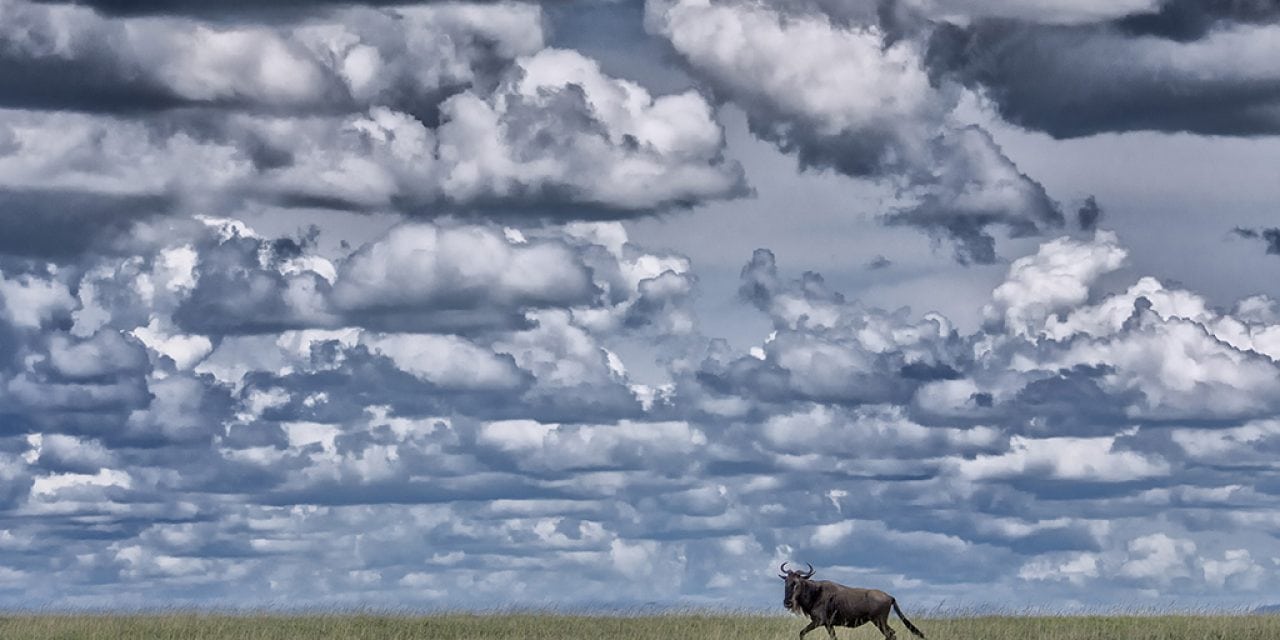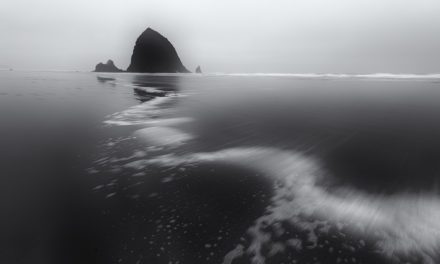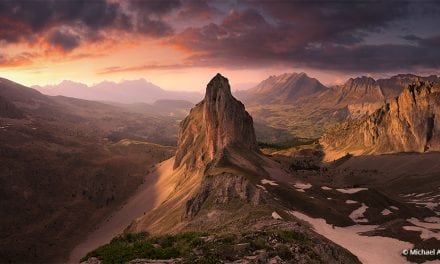Horizon placement is important to the success of a photograph. One that’s poorly placed, isn’t level or is awkward relative to the context of the composition detracts from the impact of the picture. A crooked horizon is easily correctable. Many of the recently released cameras come with some sort of leveling indicator built in. In my camera, I have a feature called Virtual Horizon. If you’re not sure if your camera has a similar option, break out the manual and look it up. If your camera doesn’t have one, purchase an inexpensive bubble level that slides into your hot shoe on top of the camera or use the level built into your tripod. Given today’s technology, there’s no excuse for a horizon that’s askew. If your camera doesn’t have a leveling feature, see if it has on-demand grid lines so you can line up the horizon with one of the horizontal lines of the grid.
Where you choose to place the horizon is determined by a number of factors. Let’s explore four of them.
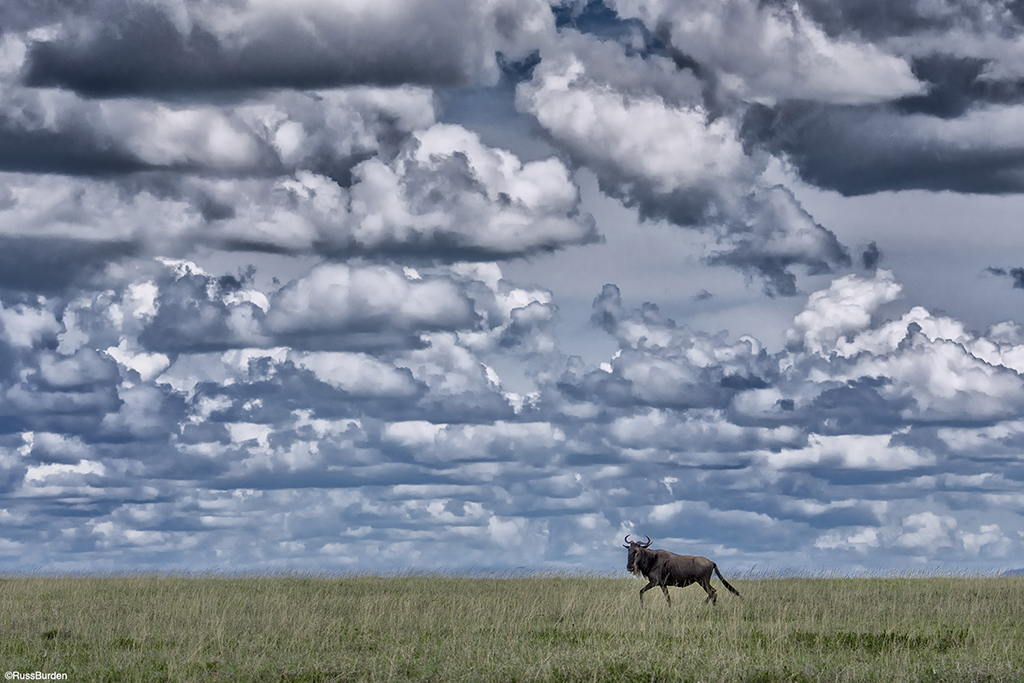
Sky Emphasis: If a sunrise or sunset is on fire, if the clouds captivate or if what’s going on above the horizon has more intrigue than what’s below, place the emphasis on the sky. As a matter of fact, if the conditions are electric, a skyscape with just a sliver of land may prove to be the best choice. In the accompanying image of the lone wildebeest in the Serengeti, the heat of the day arrived and puffy cumulus clouds enveloped the sky. The way in which they formed produced a receding layer effect that was very dramatic. Thankfully, a single subject walked into the scene as a focal point. When clouds dominate a sky, look for how the dark underside of one butts up against the brighter top of another. When dark and light overlap, it creates a three-dimensional look on a two-dimensional surface.
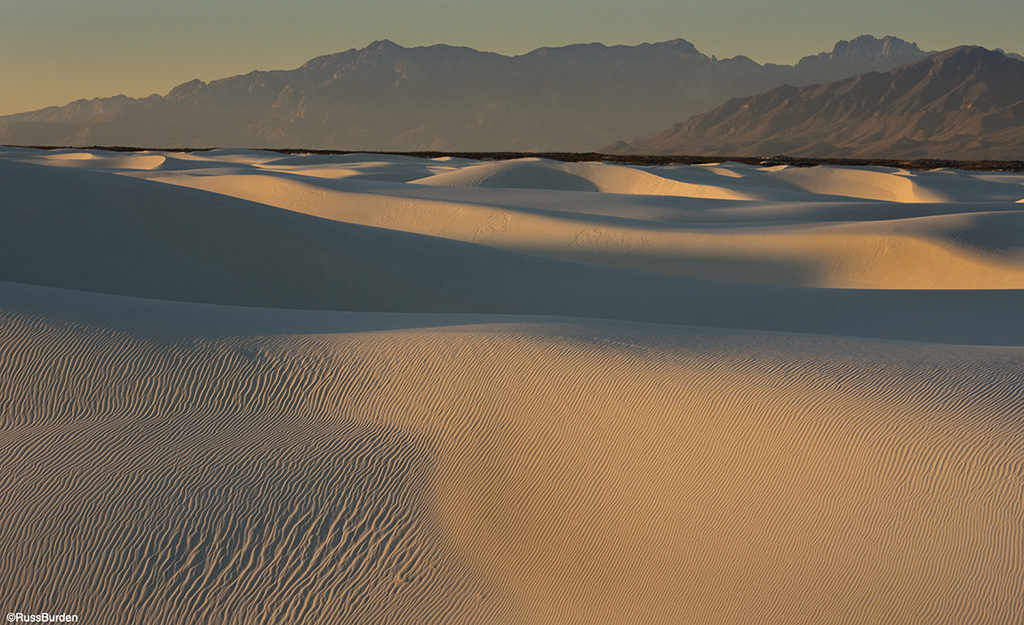
Foreground Emphasis: When I photograph the landscape, my eye is constantly on the lookout for ways to make a foreground, middle ground and background come together. More often than not, this means including as little sky as possible. The reason for this is I want the elements of the land to be the dominant features. By excluding the sky, especially on what I refer to as a severe clear day, I placed the horizon in the top 20 percent of the composition. A severe clear sky is one that’s void of clouds or anything else that entices a photographer to include it in the photo. In the image taken at White Sands National Monument, I emphasized the foreground dunes, shapes and patterns. To provide more of a sense of place, I included a small amount of sky above the mountain tops to show the soft blue hue associated with sunrise light.
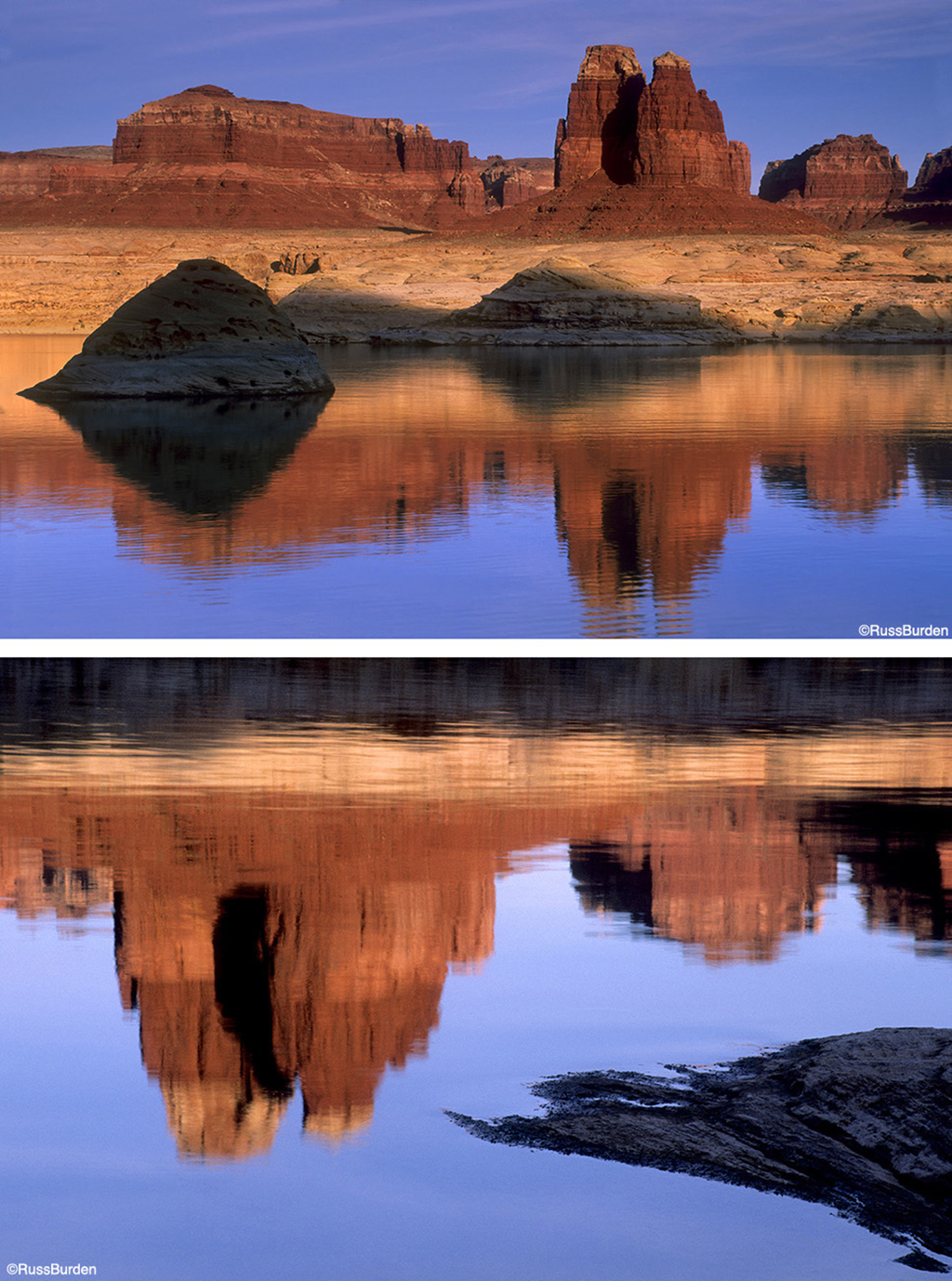
Reflections: You’re more than likely familiar with the compositional guideline that states an image with a centrally placed horizon should be avoided. It’s true in many circumstances, but I have to disagree with it when it comes to reflections. By definition, a reflection creates a mirror image which results in a 50/50 split of the subject matter. To create a mirror image, if you include 50 percent of the actual formation and 50 percent of the reflection, it mandates the horizon runs directly through the middle of the photograph. With this in mind, it’s acceptable to be a rebel and break a rule or two. If you’re one who must conform, an option is to create an image where just the reflected part becomes the entire photo. See the accompanying diptych to get a feel for both options.
Let the Composition Be Your Guide: Let the conditions dictate and create your composition accordingly. If the clouds swirl, exhaust all possibilities and make one shot where the sky dominates and another where the emphasis is placed on the foreground. If there’s fog, at one point the foreground may provide more intrigue than the sky but the next minute, this may reverse. If the camera is held vertically, it will impact the composition differently than if it was held horizontally. The important thing to remember is to make the photo BOTH ways and choose which way you prefer when you edit. Leave no potential photo behind!
Visit www.russburdenphotography.com for information about his nature photography tours and safari to Tanzania.
The post The Highs And Lows Of A Horizon appeared first on Outdoor Photographer.

